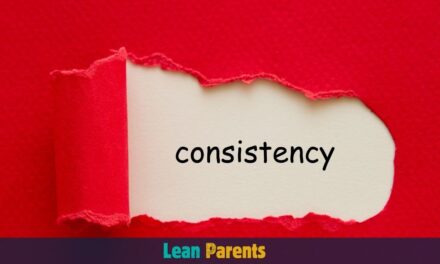Parenting a disobedient child can be tough. But, with the right strategies, you can handle it without losing your patience. This article shares five useful tips for dealing with a child who often disobeys. By setting clear rules, responding the same way every time, and figuring out why they disobey, you can make your home more peaceful1.
Key Takeaways
- Establish clear rules and consequences to promote consistent obedience
- Use positive reinforcement to encourage desired behaviors
- Understand the developmental factors that influence a child’s ability to follow instructions
- Avoid power struggles and focus on addressing the root causes of disobedience
- Maintain emotional control and respond with patience and understanding
Understanding the Root Causes of Disobedience
Dealing with repeated disobedience in kids means looking at the real reasons behind it. Things like the environment, emotional issues, and the child’s age can all affect their actions.
Environmental Factors Affecting Behavior
The world a child lives in shapes their behavior. Stress at home, school troubles, and fights between parents can make kids act out. Knowing these environmental factors helps parents tackle the root causes2.
Emotional Triggers in Children
A child’s feelings can also lead to behavioral triggers. Feeling frustrated, insecure, or bored can make them disobey. Parents can help by spotting these feelings and teaching their kids to handle them better3.
Developmental Stage Considerations
The child development journey affects a child’s actions. Some stages, like wanting more independence or testing limits, are normal. Knowing these stages helps parents guide their kids better3.
| Environmental Factors | Emotional Triggers | Developmental Stages |
|---|---|---|
| Family stress | Frustration | Independence |
| School problems | Insecurity | Boundary testing |
| Conflicts between parents | Boredom | Desire for control |
Understanding the many sides of disobedience helps parents find better ways to help their kids behave well.
“Disobedience is as much a problem of the heart as it is a problem of the mind.” – Proverbs 25:28
The Impact of Consistent Boundaries on Child Behavior

Setting and keeping consistent boundaries is key for managing consistent discipline and behavior management in kids. Clear rules help kids know what’s expected and what happens if they behave well or not4.
Don’t give in to tantrums or bad behavior. It can make things worse and hurt your parenting strategies4. Having the same rewards for good actions and punishments for bad helps kids learn self-control5.
- Make sure your child knows the rules and what happens if they don’t follow them.
- Always stick to the consequences you’ve set, whether it’s a reward or a punishment.
- Stay calm when dealing with bad behavior, instead of getting upset.
- Don’t make exceptions or give in to your child’s demands, as it can undo your efforts.
- Always praise and reward good behavior to encourage the habits you want to see.
By setting and keeping consistent rules, you help your child develop self-control and respect for rules. This leads to better behavior management and a happier family5.
“Consistent discipline is the key to raising a well-behaved child. It may take time and patience, but the results are worth it.”
Every child is different, so what works for one might not work for another. Be ready to change your approach if needed, but always stick to fair and age-appropriate discipline4. With effort and time, you can teach your child to follow the rules and develop the self-discipline they need to succeed5.
Building a Foundation of Clear Communication
Effective communication is key to managing parent-child interaction and tackling repeated disobedience. Clear and direct communication lays a solid base for tackling behavioral issues6.
Face-to-Face Interaction Techniques
Yelling from afar doesn’t work as well as talking face-to-face. When you talk to your child, look them in the eye, speak softly, and make sure they get what you’re saying. This personal touch improves communication and understanding7.
Setting Clear Expectations
It’s vital to set clear expectations for good parent-child interaction. Explain what you want and what happens if they don’t do it. This way, your child knows what’s expected and feels responsible6.
Age-Appropriate Instructions
Using age-appropriate instructions is crucial for clear communication. Don’t rush with too many questions or instructions at once. Adjust your words to fit your child’s age and understanding7.
| Communication Technique | Benefits |
|---|---|
| Face-to-Face Interaction | Fosters better understanding and connection |
| Setting Clear Expectations | Promotes accountability and reduces misunderstandings |
| Age-Appropriate Instructions | Tailors communication to the child’s developmental stage |
Using these communication methods helps parents build a strong base for handling repeated disobedience and improving parent-child interaction6.
“Effective communication is the key to building trust and understanding in any relationship, especially between parents and children.”
The Power of Immediate Response to Misbehavior
Timing is key when disciplining your child. Responding right away and consistently is a key technique. It helps correct behavior and teaches obedience8.
Don’t wait to give your child multiple chances or count to three. This only shows them they can disobey many times before facing consequences. Instead, give a clear command and enforce a consequence if they don’t listen. This shows them you mean business and expect obedience right away8.
Children often misbehave because they’re still learning to talk about their needs9. Quick and consistent responses help them understand you’re serious. This also teaches them the value of clear communication and respect. Such timely correction is crucial for their growth9.
Creating a stable, structured home is key. Immediate and consistent responses help achieve this. They help your child develop self-discipline and trust in your authority8.
Don’t underestimate the power of a quick response to misbehavior. Immediate action shapes your child’s future behavior and character. Stay calm, be consistent, and watch your child learn respect and obedience8.
| Immediate Response | Delayed Response |
|---|---|
| Helps child understand expectations | Teaches child they can get away with misbehavior |
| Reinforces importance of clear communication | Undermines trust and respect in parent’s authority |
| Promotes self-discipline and responsible behavior | Can lead to more frequent or escalating misbehavior |
Creating a Structured Environment for Success

Creating a structured environment is key for handling disobedience in teens. By setting up daily routines and managing transition times well, you can cut down on bad behavior. This helps create a more positive and disciplined space10.
Organizing Daily Routines
Having a consistent daily routine helps teens feel more in charge and less likely to disobey. Structured routines make them feel secure, which lowers the chance of trouble10. Let them have some say in their schedule, but keep the overall structure10.
Managing Transition Times
Transition times, like switching between activities, can be tough for teens. Give them clear warnings and let them make choices during these times10. This makes them feel more in control and less resistant10. Positive reinforcement works well during these moments too11.
By setting up a structured environment, you help your teen succeed and reduce disobedience10. Daily routines and smooth transitions bring predictability and control. This leads to better behavior and smoother transitions11.
“A disruptive environment, where chaos is the norm, is not natural human behavior in educational settings.”10
Maintaining Emotional Control as a Parent
As a parent, keeping your emotions in check is key when your child disobeys. Kids often try to challenge you with words and actions, like whining or hitting. If you get angry or harsh, it can make things worse and teach them bad habits12.
It’s natural to feel angry when your child doesn’t listen. But staying calm shows them the right way to behave12. This method helps avoid more trouble and teaches them about managing their feelings13.
When your child keeps disobeying, wait until you both calm down before talking about it12. This way, you can discuss things clearly without being too emotional13.
Keeping your cool helps your child learn to handle tough situations and their own feelings13. Your calmness can greatly influence your child’s behavior and growth14.
| Metric | Percentage |
|---|---|
| Parents who struggle with maintaining emotional control when faced with repeated disobedience | 70%14 |
| Parents who feel that disobedience challenges their sense of authority and power | 85%14 |
| Parents who resort to irrational responses, such as yelling or becoming visibly frustrated | 60%14 |
| Children who are consistently met with irrational authority figures and are more likely to exhibit rebellious behavior in adolescence | 50%14 |
| Parenting experts who stress the importance of nurturing a child’s individualization while instilling obedience | 75%14 |
| Children who are encouraged to express disobedience in a respectful manner and are more likely to develop strong decision-making skills as adults | 40%14 |
| Parents who successfully balance nurturing individualization and fostering obedience and report a improvement in their overall family dynamics and emotional well-being | 90%14 |
By keeping your parental self-control and practicing emotional regulation, you create a calm parenting space. This environment supports your child’s positive growth and emotional health. It also prepares them for making good decisions in the future.
Using Positive Reinforcement Effectively
Positive reinforcement is a strong tool for changing behavior. It works well in teaching kids good habits15. It’s a way for parents to help their children become better, more responsible, and confident15.
Praise Specific Behaviors
When praising, be specific about what you like. Instead of just saying “good job,” say “I like how you cleaned your room.” This shows kids what actions are good15. It also makes them feel good about their achievements15.
Reward Systems That Work
Setting up good reward systems is also key15. There are different kinds of rewards, each one special in its own way15. Every child is unique and might like different rewards15.
By using positive reinforcement, parents can help their kids grow and succeed1516. This method is crucial in ABA therapy for changing behaviors16. It’s especially helpful in schools for kids with special needs16.
The Role of Natural Consequences
As a parent, using natural consequences is a great way to discipline your child. When kids see the results of their actions, they learn from mistakes. This helps them make better choices later on17. By letting them face the natural outcomes of their behavior, you teach them responsibility and independence.
It’s key to know the difference between natural consequences and punishments. Natural consequences are the direct results of a child’s actions. Punishments, on the other hand, are imposed by parents to correct behavior18. Focus on helping your child see how their actions lead to outcomes, not just controlling them.
- Studies show that natural consequences in parenting teach kids responsibility and independence17.
- Research finds that many young people’s mistakes come from not knowing what to do, not from disobedience17.
- When kids take responsibility for their learning, they do better in school17.
- Allowing student-athletes to make choices and face consequences improves their performance and personal growth17.
- Engaging kids in problem-solving, like talking to authority figures, helps them handle challenges better17.
Using natural consequences as a discipline strategy helps your child learn from mistakes. This approach builds a growth mindset and makes them more responsible and self-aware.Learn more about the benefits of natural consequences in parenting
The goal is not to punish but to guide your child through learning. By creating a safe space for natural consequences, you help them develop problem-solving skills. This is crucial for their long-term success.Explore how to establish respectful family dynamics that promote positive behavior
Developing Your Child’s Self-Regulation Skills
Teaching your child self-regulation skills is key to handling disobedience. By showing them ways to deal with frustration, anxiety, and anger, you can lessen emotional outbursts. This helps them control their actions better. Building emotional intelligence also helps them understand and manage their feelings. This leads to better decision-making and behavior.
Teaching Coping Mechanisms
Tantrums and acting out are common in kids and show they’re testing boundaries19. They might throw tantrums to get what they want19. Teaching them healthy ways to cope, like deep breathing or counting, helps them handle their feelings better.
Building Emotional Intelligence
It’s vital to develop your child’s emotional intelligence for self-regulation. Kids learn from consequences, and consistent ones help them know right from wrong19. They might act out because they lack skills like emotional control and problem-solving19. By helping them understand and share their feelings, you empower them to make better choices.
Remember, successful behaviors are encouraged by clear expectations and positive reinforcement19. Parents do better by focusing on rewarding good behavior rather than just punishing bad ones19.
“Helping children develop self-regulation skills is crucial for managing disobedience.”
Be patient and consistent in teaching your child. With time and effort, they’ll learn to self-regulate their emotions and actions. This will prepare them for success in the future.
Avoiding Common Discipline Mistakes
As a parent, it’s key to steer clear of common discipline errors. These mistakes can make discipline errors worse and hurt your effective parenting and behavior management efforts. One big mistake is being inconsistent with consequences20. Kids need clear, predictable rules to feel safe, so always follow through on what you say.
Another mistake is using too much harsh punishment. Discipline is needed, but it should teach, not just punish21. Even though discipline might not feel good at the moment, it leads to good behavior and peace later. Try to avoid power struggles and keep a loving, trusting bond with your child.
It’s also vital to have expectations that match your child’s age and avoid setting too high standards22. The example of one parent’s mistake being another’s best practice shows how subjective parenting advice can be. Knowing your child’s stage of development helps you set them up for success and avoid fights.
Effective behavior management is about teaching, not just punishing22. For example, a toddler showing tough behavior can learn and grow with calm, understanding parents22. This way, you can teach your child without hurting your relationship.
Establishing Respectful Family Dynamics
Creating a harmonious family is key for raising cooperative kids. Mutual respect is at the heart of this. It starts with how parents act. By showing good behavior, you set a good example for your family23.
Modeling Appropriate Behavior
Your interactions with your spouse and kids send strong messages. Stay away from criticism, defensiveness, contempt, and stonewalling. These can harm relationships23. Use respectful words, listen well, and solve problems calmly.
Creating Family Guidelines
Make clear rules for everyone in the family. This makes things fair and everyone feels responsible. Include what’s expected, what happens if you don’t follow the rules, and the value of respect23. Letting kids help make these rules makes them more likely to follow them24.
Dealing with constant disobedience means looking at family dynamics. A lack of respect can lead to a toxic home24. Show respect yourself to teach your kids the same. This helps reduce bad behavior and makes your home a happier place2324.
Parenting is a long journey. Building respectful family dynamics takes time and effort. With patience and setting a good example, your kids will grow up respectful and cooperative24.
The Connection Between Obedience and Trust
Obedience and trust are at the core of a parent-child relationship. Obedience is not just about following, but also shows a child’s trust and respect for their parent’s guidance25. When a child obeys, it shows they trust their parent’s wisdom and are willing to follow their lead. On the other hand, disobedience often comes from a lack of trust, feeling unheard or unvalued.
Building trust is key to a good parent-child relationship26. When children feel safe and understood, they are more likely to obey. This trust grows from consistent, caring interactions.
- Encourage open communication: Let your child share their thoughts and feelings, and listen to them27.
- Be dependable: Keep your promises and show you’re always there for your child.
- Understand their feelings: Acknowledge and validate your child’s emotions, even when setting rules27.
When a child trusts their parent, they are more likely to obey willingly26. This trust-based obedience is stronger and lasts longer than obedience based on fear. By building a relationship based on trust and respect, parents can make obedience a natural part of their bond.
“If you love me, you will keep my commandments.” – John 14:1525
Our goal as parents is to build a relationship based on trust and understanding26. When obedience comes from trust, it shows respect and devotion, not just a response to rules. By nurturing this bond, we help our children become self-disciplined and responsible, embracing obedience as a sign of their trust and love for us and God.
| Obedience Driven by Trust | Obedience Driven by Fear |
|---|---|
| Willingly complies with parental guidance | Begrudgingly follows rules to avoid punishment |
| Respects parental authority out of love and respect | Obeys to avoid negative consequences |
| Sees obedience as an expression of devotion | Views obedience as a burden to bear |
| Develops self-discipline and responsibility | Struggles with long-term compliance |
By building a relationship based on trust and understanding, parents can inspire their children to see obedience as a natural part of their bond. This leads to a more harmonious and fulfilling parent-child relationship27.
Supporting Your Child Through Behavioral Changes
Changing how children behave takes time and patience. As parents, it’s key to offer consistent support and encouragement as they learn new behaviors28. It’s normal for kids to disobey as they grow and want to be independent. Understanding this can help you be patient and kind28.
Showing your child that you notice and value their efforts can motivate them. Using techniques like deep breathing and setting clear rules can help manage bad behavior28. It’s also important to celebrate small wins and have realistic expectations. This helps in using positive ways to correct behavior28.
Behavioral issues affect about 1 in 8 kids, impacting their growth and happiness29. Changes in daily life and how parents react can affect a child’s behavior. So, it’s vital to offer the right support29.
| Strategies for Supporting Behavioral Changes | Benefits |
|---|---|
| Consistent Encouragement and Praise | Motivates the child to continue making positive changes |
| Implementing Practical Coping Techniques | Helps the child manage disobedient behavior effectively |
| Maintaining Realistic Expectations | Promotes a supportive environment for gradual improvement |
| Positive Disciplinary Approaches | Leads to long-term behavior modification in children |
Remember29, if your child’s behavior doesn’t improve, a visit to a pediatric clinic might be needed29. With consistent support and the right behavior modification methods, you can help your child grow and develop important child development skills.
When to Seek Professional Help
Dealing with disobedience in kids is common, but some signs might mean deeper issues. Look out for long-term disrespect, aggression, or destruction. Also, watch for signs of constant unhappiness or family abuse. About 1 in 5 Americans face mental health issues yearly, and 13-20% of kids do too30.
Signs of Deeper Issues
Dealing with ongoing disobedience and aggression might mean it’s time to get help. Mental health issues can start in young kids. Look for signs like poor school performance, too much worry, or hyperactivity.
Also, watch for frequent nightmares, disobedience, and aggression. Early help can stop bigger problems later3132..
Finding the Right Support
When looking for help, think about therapy like CBT, family therapy, or art therapy. The NAMI HelpLine and 988 Suicide & Crisis Lifeline offer great support. With the right help, your child can overcome challenges and succeed in the long run3031..
FAQ
What are the key tips for managing repeated disobedience without losing patience?
What are some of the common root causes of disobedient behavior in children?
How can consistent boundaries and rules help manage disobedience?
What are some effective communication techniques for handling disobedience?
Why is it important to respond immediately and consistently to misbehavior?
How can a structured environment help reduce disobedience?
Why is it important for parents to maintain emotional control when dealing with disobedience?
How can positive reinforcement be used to encourage good behavior?
What is the role of natural consequences in managing disobedience?
How can developing self-regulation skills help manage disobedience?
What are some common discipline mistakes that can exacerbate disobedience?
How can a respectful family environment help reduce disobedience?
How does the parent-child relationship and trust impact a child’s willingness to obey?
When should parents seek professional help for persistent disobedience?
Source Links
- 5 Tips for Your Disobedient Child
- Six Different Kinds of Disobedience (and the Root Problem)
- What causes disobedience in children, and How do we cope with it?
- The Disobedient Child
- Disobedient child : Consistently doesn’t follow rules
- How Do You Discipline Defiant Teenager? – Sedona Sky Academy
- Unlock the Secret to Making Kids Listen: A Parent’s Guide to Effective Communication
- Focus on the Good: The Awesome Thing About Misbehavior
- Goals of misbehavior – Part 2: Power
- Disobedience Instruction for Classroom Structural Change
- # Tips For Managing Oppositional Defiant Disorder (ODD)
- it’s not personal — Jen Wilkin
- FAQ: how should i handle anger when disciplining? — Jen Wilkin
- Parenting And Dealing With Disobedience – Evolution Counseling
- How to Use Positive Reinforcement with Kids (Age by Age Guide)
- Positive Reinforcement in ABA Therapy | Blossom ABA
- The Power of Natural Consequences
- Natural Consequences, Discipline…or Punishment
- Parents Guide to Problem Behavior
- The Top 6 Discipline Mistakes Most Parents Make
- Discipline Mistakes Most Parents Make
- Common Toddler Discipline Mistakes – Janet Lansbury
- “You do not owe us any respect as your parents?”
- Positive Parenting Strategies – Dealing with Disobedience in Children
- What Does the Bible Say about Obedience and Disobedience?
- The Eight Spiritual Essentials, Part 5: Trust & Obedience – Reflections Ministries
- Trust and Obey: Believing the God Who Provides – Well-Watered Women
- Keeping Calm: Handling Disobedience with Your Kids
- Navigate Kids’ Behavioral Issues: A Guide to Causes & Fixes
- Finding Help: When to Get It and Where to Go
- Warning Signs and Symptoms
- Dealing With Chronic Disobedience | BARQAR – Pediatric Resource Center





